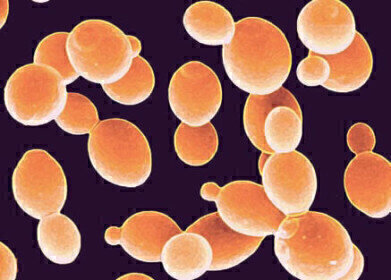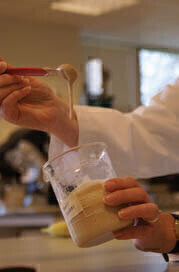News & Views
Wild About the Evolution of Domesticated Yeast
Apr 29 2009
As probably one of the earliest domesticated organisms having been used by humans for tens of thousands of years for baking and brewing, yeast is today regarded by geneticists as the ‘model’ model organism, because of its genetic similarities to humans and the powerful tools currently available. However, with domesticated yeast at the forefront of major breakthroughs in genomics, researchers began to question whether the highly selected yeast produced for laboratory experiments in any way influenced the outcome of scientific research.
After five years searching for the answer a team of scientists, led by Ed Louis at The University of Nottingham and Richard Durbin a principal investigator at The Sanger Institute and who is currently involved in the 1000 genome project, believe that even after centuries of domestication, the yeast we tamed for science, brewing and baking is actually much the same as its closest relatives still living in the wild.
“In brief our study accomplished two things. First, the high levels of variation seen between strains of yeast required the building of bioinformatics tools which could handle multiple comparisons with such diversity within very similar genomes. These tools are now being used for similar studies in humans including for the 1000 human genome project. The fact that yeast exhibited so much variation yet its genome is less than 1/300 of the human genome in size was a prime motivation for Richard’s involvement in this project as it would provide them with a test dataset for bioinformatics tool building and analysis,” said Professor Louis
“The second finding has to do with yeast evolution itself,” continued Professor Louis. “The baker’s yeast, Saccharomyces cerevisiae, is the ‘model’ model organism because of its ease in manipulation, the powerful tools available for study and its similarities to all life in fundamental biological processes. It has, however, had a long association with humans through fermentation activities and it has been argued that yeast is domesticated to such a point that it no longer resembles its original wild ancestors.
“We sequenced over 35 strains of baker’s yeast from many locations and sources including wine, bread and sake making to wild fruit and flower fermentations to clinical and food spoilage isolates. In addition we sequenced over 35 strains of the closest wild cousin, Saccharomyces paradoxus, which is found in similar locations but has never been used in human fermentation activities.”
“Our findings are most consistent with baker’s yeast being natural and close in its evolution to its relatives and that rather than domesticating yeast, we have merely utilised strains with appropriate properties and moved them around the world.”
“The variation we describe not only informs us of evolutionary processes going on in these yeasts but provides us with the sequence data that will allow us to determine what makes a good baking strain versus a brewing strain as well as what makes a strain a clinical problem
in some cases. We can also use the information to improve the fermentation properties of yeast either in sugar utilisation, ethanol production or flavour enhancement. For example, we will be surveying the strains and the variation within them for improved ethanol production as part of the biofuels project in the BBSRC funded BioEnergy Centre. We can also use the variation to determine the genetic factors involved in many
complex traits, some of which model human disease,” he added.
Dr Richard Durbin, said: "We have been able to use the amazing power of modern DNA sequencing to obtain an unprecedented picture of the way the genes in this organism vary, and how it evolved. The tools we developed to study yeast are now being applied to the human genome, to help identify genetic variants that are involved in disease.” Their research findings which has established the level of variation between different populations and species of yeast have been published in Nature.
(Yeast culture picture courtesy of BBSRC)
Digital Edition
ILM 49.5 July
July 2024
Chromatography Articles - Understanding PFAS: Analysis and Implications Mass Spectrometry & Spectroscopy Articles - MS detection of Alzheimer’s blood-based biomarkers LIMS - Essent...
View all digital editions
Events
Jul 28 2024 San Diego, CA USA
Jul 30 2024 Jakarta, Indonesia
Jul 31 2024 Chengdu, China
ACS National Meeting - Fall 2024
Aug 18 2024 Denver, CO, USA
Aug 25 2024 Copenhagen, Denmark



.jpg)

24_06.jpg)













